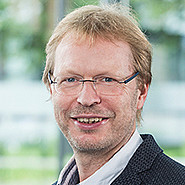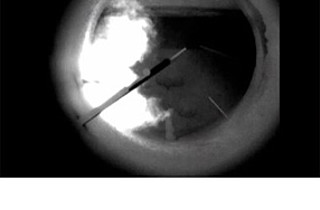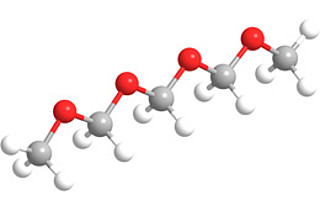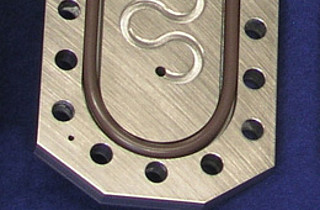Circular economy for cement
About 30Mt/a of Portland cement is produced in Germany. Large amounts of energy are consumed per output ton and carbon dioxide (CO2) is released. At the same time, over 200Mt/a of mineral construction waste is produced, only some of which finds further use, e.g. in the road and path construction as crushed stone.
State of the art
In the conventional production of Portland cement, lime marl is extracted from nearby quarries, finely ground, and this raw meal is burned at 1450 degrees Celsius in a rotary kiln to produce cement clinker and then ground it into cement. In the process, CO2 is released from the lime it contains and during combustion. Raw meal with a lower lime content can be burned at 1250°C to produce belite cement, which has so far been economically insignificant.
Technology
The Institute of Technical Chemistry (ITC) at KIT is working on making cement production more resource-efficient and decentralized - in the optimal case where structures are demolished and new ones are built. In the ITC process, raw meal reacts with a mineralizer in a CO2 atmosphere already at 1000°C to form belite cement. Concrete crushed sands, which occur as a fine fraction during the upgrading of construction materials, and lime to correct the chemistry are used. The necessary CO2 kiln atmosphere is fed by decomposition of the lime. The excess CO2 can be used in a subsequent process for carbonation of the coarse fraction from construction material preparation (gravel and sand) in an autoclave. Increased pressures and temperatures are applied to achieve rapid carbonation. Fine and coarse fractions can thus be processed at the same place and recycled to a high quality.
Advantages
The process increases the recycling rate of mineral construction waste: Recycled binders and aggregates replace primary resources. In addition, CO2 from Belit cement production can be used on site. Cement paste residues on R-aggregates are carbonated directly, closing pore spaces and improving a previous shortcoming of such aggregates - the increased water demand in concrete with aggregates.
Options for companies
The ITC process would move both, the upgrading of construction materials and new production to the place of use, enabling new, regional locations and business models. Belite production has been tested laboratory; furthermore a pilot plant is under construction. KIT is looking for partners in further developing the carbonation process, especially for autoclave technology and control.
Your contact person for this offer

Innovation Manager Karlsruhe Institute of Technology (KIT)
Innovation and Relations Management (IRM) Phone: +49 721 608-25587
Email: rainer.koerber@kit.edu






